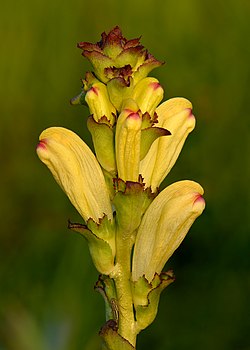This article needs additional citations for verification .(January 2021) |
| Pedicularis sceptrum-carolinum | |
|---|---|
 | |
| Scientific classification | |
| Kingdom: | Plantae |
| Clade: | Tracheophytes |
| Clade: | Angiosperms |
| Clade: | Eudicots |
| Clade: | Asterids |
| Order: | Lamiales |
| Family: | Orobanchaceae |
| Genus: | Pedicularis |
| Species: | P. sceptrum-carolinum |
| Binomial name | |
| Pedicularis sceptrum-carolinum | |
Pedicularis sceptrum-carolinum, commonly known as moor-king or moor-king lousewort, is a plant species in the genus Pedicularis . [1]